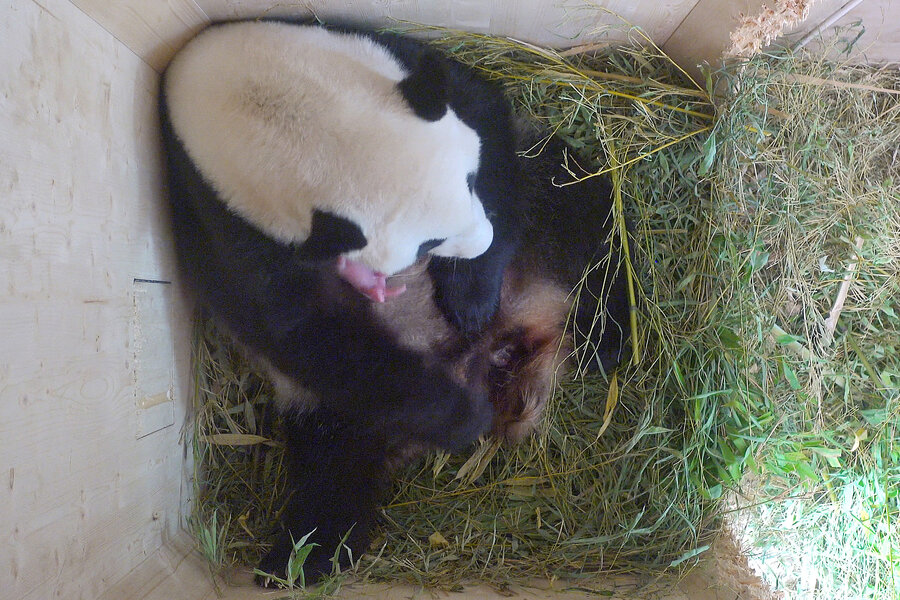Panda-monium! Giant panda produces itty-bitty new resident at Vienna zoo.
Loading...
A zoo in Vienna welcomed a rare creature on Sunday: a naturally conceived, giant panda cub.
The cub, born around 5:05 a.m. local time at Schoenbrunn Zoo, is the fourth that Yang Yang the giant panda has conceived naturally. Such births are extremely rare for a species known for its mating difficulties.
Giant pandas are considered endangered and listed on the World Conservation Union's (IUCN's) Red List of Threatened Species. There are only believed to be about 1,600 individuals left in the wild. About 300 reside in zoos around the world. While there is some debate about whether raising pandas in captivity is worth the financial investment, some say the cost is well worth it as public excitement generated by the births and videos of frolicking baby pandas frequently translates to public support for conservation efforts.
It likely will be a while yet before we get a good portrait of Yang Yang's cub. At a mere 10 cm (four inches) long and 100 grams (3.5 ounces), zookeepers aren't yet able to determine a gender. A newborn giant panda is the smallest mammal newborn relative to its mothers size, with the exception of marsupials, such as kangaroos: a newborn panda, by weight, is about 800 times smaller than its mother.
The baby, now pink, won’t open its eyes for another six to eight weeks, and won’t be mobile for another three months.
It will stay with its mother up to three years, and nurse for eight to nine months. Though the cub will be nutritionally weaned in a year, it could take up to two years to become socially weaned.
Pandas have an infamously slow breeding rate due to biological challenges. Female giant pandas reach breeding maturity between four and eight years of age, and ovulate only once a year, with a short window of two or three days when they are able to conceive.
They give birth between 95 and 160 days after conception, and, because they look after their young for at least 1.5 years, they can produce a cub once every other year at most.
Furthermore, giant panda babies have a mortality rate of 40 percent within their first year, said zoo director Dagmar Schratter in a statement.
But so far, she says, "Yang Yang is an experienced mother and is taking great care of her offspring.”
The panda area is currently closed to the public to allow mother and child some peace and quiet.
This report contains material from Reuters.






